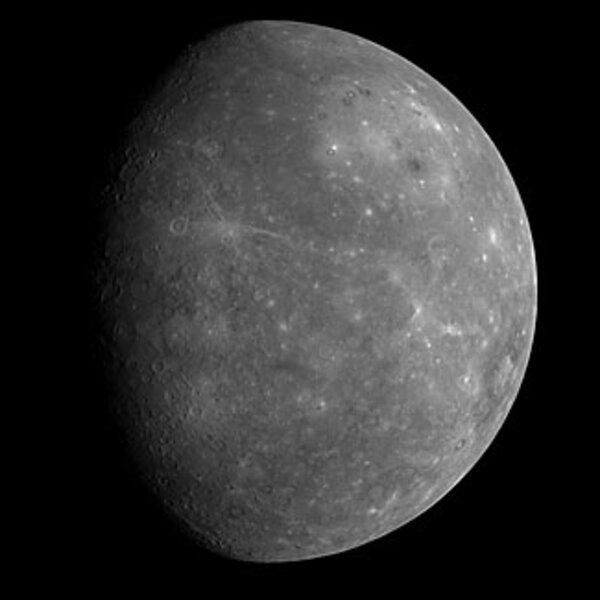NASA's Messenger probe reveals new clues about Mercury
Loading...
NASA's Mercury mission spacecraft, Messenger, is revolutionizing humanity's view of the first rock from the sun. And its primary science mission hasn't even started yet.
During its third and final flyby of Mercury, NASA's Messenger has found minerals on the planet's surface that current models say shouldn't be there in such abundance. And it appears that the planet was volcanically active – explosively so – for far longer than current ideas about its geological history suggest.
The flyby took place Sept. 29. Mission scientists unveiled highlights from the flyby during a press briefing Tuesday afternoon.
Piecing together Mercury's story "is like reading a fine mystery novel by Dorothy Sayers or Agatha Christie," says Sean Solomon, the mission's lead scientist and a researcher at the Carnegie Institution of Washington's Department of Terrestrial Magnetism. The effort comes complete with clues that point to the story's denouement, as well as red herrings to throw a reader off track.
Mercury is the smallest of the solar system's eight planets. And it's the oddest among the rocky planets. Its iron core comprises up to 70 percent of the planet's mass, making it the most dense planet in the solar system after Earth.
Iron and titanium surface
Which brings up one of Mercury's red herrings. Previous studies have indicated that the planet's surface is made up mostly of silicate-based minerals. That's been considered odd, since the vast majority of the planet is taken up by an iron-titanium core, notes David Lawrence, another Messenger mission scientist.
Then, during the first Mercury flyby on Jan. 14, 2008, Messenger detected unexpectedly high levels of iron and titanium in surface minerals, he says. Flyby No. 3 provided an opportunity to check those initial results. It found that the first measurements were no fluke; the planet really is covered virtually universally with iron and titanium oxides.
That's more consistent with what you'd expect from a largely metallic planet like Mercury, Dr. Lawrence adds. But it calls current models of the planet's formation into question.
To explain how a largely Ironman planet came to be covered with a largely silicate crust, some scientists had invoked a powerful impact early in the planet's history. This would have knocked away much of the planet's original iron-rich crust, leaving a thinner shell dominated by silicates. But now that the crust appears to be dominated by these metal oxides, the cosmic smackdown theory requires a hard second look. And that's just one of three broad groups of ideas scientists have considered to explain the now-debunked surface silicate.
"This is a pretty exciting result for us," says Lawrence, a geochemist at Johns Hopkins University's Applied Physics Laboratory, which built and runs the desk-sized Messenger spacecraft.
Volcanic activity
Red Herring No. 2? Previous observations suggested that Mercury became geologically dead very early in its 4.6 billion year history. Not so, according to images for the third flyby. Among the portraits: a 180-mile-wide basin with two concentric rims. The floor below the lowest rim cradles "some of the youngest volcanic floes," says Brett Denevi, an Arizona State University researcher and member of the Messenger science team.
How young? The team estimates that the floes are around a billion years old – suggesting the planet was volcanically active far longer than previously thought. Moreover, features on the plains surrounding the basin suggest explosive eruptions – something that happens when the magma has a high gas content. That observation, in turn, could yield clues about the composition of the planet's interior.
Launched on Aug. 3, 2004, the Messenger spacecraft is expected to begin orbiting Mercury on March 19, 2011. The $446-million mission is expected to last one Earth year. And researchers are eagerly awaiting its arrival.
"We still have a long way to go to understand the full story line" on Mercury, says lead scientist Dr. Solomon.
---
Click here to read more about the images captured by Messenger spacecraft's first flyby of Mercury.
---
Follow us on Twitter.





